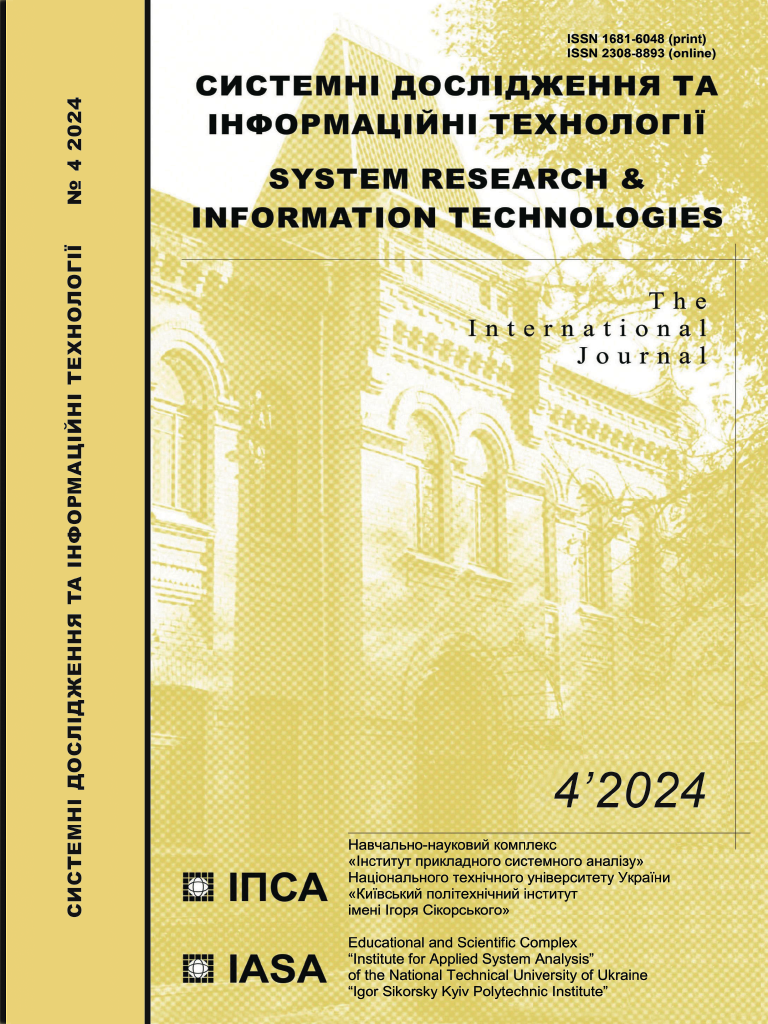Quantum mechanics approximation approach to investigate molecular behavior in nitrogen binding to enzymes and proteins: Implications for biofuel production
DOI:
https://doi.org/10.20535/SRIT.2308-8893.2024.4.04Keywords:
nitrogen binding, enzyme molecules, protein formation, adiabatic reactions, biogas production, organic molecule formationAbstract
This research delves into the essential mechanisms underlying the binding of Nitrogen (N) atoms to enzyme molecules and their implications for protein formation in food crops and biogas production. Nitrogen (N), along with Phosphorus (P) and Potassium (K), plays a pivotal role in soil fertility and crop growth. The study explores the interactions between atoms through various mechanisms, such as catalysts, photosynthesis, and adiabatic reactions, to comprehend their roles in facilitating organic molecule formation. Additionally, the research examines the influence of enzymes on amino acids and their contributions to protein structure. The simulation process employs the Hamiltonian equation to quantify energy intensities and explore the effectiveness of adiabatic reactions in organic transformations. By investigating the molecular interactions in enzyme-catalyzed processes, this research aims to enhance protein formation in crops and optimize biogas production.
References
S.J. Parikh, B.R. James, “Soil: The Foundation of Agriculture,” Nature Education Knowledge, 3(10):2, 2012. Available: https://www.nature.com/scitable/knowledge/library/soil-the-foundation-of-agriculture-84224268/
Agostino Migliore, Nicholas F. Polizzi, Michael J. Therien, and David N. Beratan, “Biochemistry and Theory of Proton-Coupled Electron Transfer,” Chem. Rev., 2014, 114, pp. 3381-3465. Available: https://pubs.acs.org/doi/pdf/10.1021/cr4006654
B. Alberts et al., Molecular Biology of the Cell; 4th edition. New York: Garland Science, 2002. Available: https://www.ncbi.nlm.nih.gov/books/NBK26819/
António J.M. Ribeiro, Jonathan D. Tyzack, Neera Borkakoti, Gemma L. Holliday, and Janet M. Thornton, “A global analysis of function and conservation of catalytic residues in enzymes,” J. Biol. Chem., 295(2), pp. 314–324, 2019. doi: 10.1074/jbc.REV119.006289
P. Weiland, “Biogas production: current state and perspectives,” Appl. Microbiol. Biotechnol., 85, pp. 849–860, 2010. doi: 10.1007/s00253-009-2246-7
D.C. Phillips, “The Three-dimensional Structure of an Enzyme Molecule,” Scientific American, November 1966. Available: https://web.ics.purdue.edu/~gchopra/class/public/readings/Introduction_Lecture1/Phillips_SCIAM_66_Lysozyme_structure.pdf
M. Spodenkiewicz, C. Diez-Fernandez, V. Rüfenacht, C. Gemperle-Britschgi, and J. Häberle, “Minireview on Glutamine Synthetase Deficiency, an Ultra-Rare Inborn Error of Amino Acid Biosynthesis,” Biology 5(4), 40, 2016. doi:10.3390/biology5040040
J.C. Slater, “Atomic Radii in Crystals,” J. Chem. Phys., 41, 3199, 1964. doi: https://doi.org/10.1063/1.1725697
A.B. Migdal, V. Krainov, Approximation Methods in Quantum Mechanics; translated by Anthony J. Leggett, New York: W.A. Benjamin Inc., 1969, 146 p.
Vinicius de Godoi Contessoto et al., “Electrostatic interaction optimization improves catalytic rates and thermotolerance on xylanases,” Biophys. J., 120(11), pp. 2172–2180, 2021. doi: 10.1016/j.bpj.2021.03.036
R.P. Feynman, R.B. Leighton, and M. Sands, Thy Feynman Lectures on Physics; Vol. II Ch. 4: Electrostatic Energy. New Millennium edition, 2011, 1552 p. Available: https://www.feynmanlectures.caltech.edu/II_08.html

